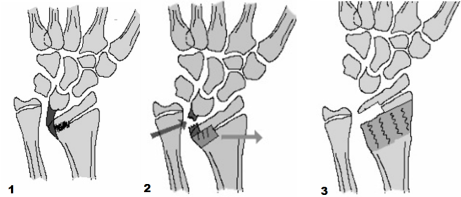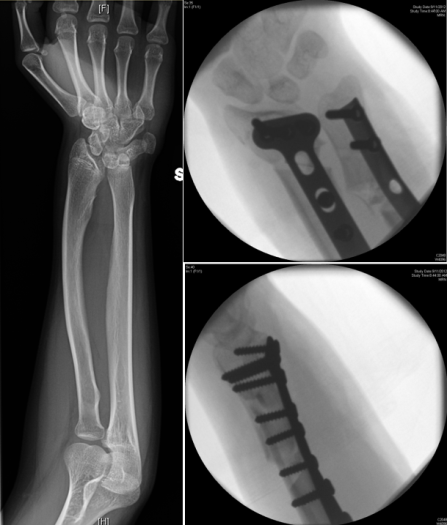- This is caused by an asymmetric growth arrest of volar and ulnar aspect of distal radial physis, resulting in increased volar and ulnar tilt.
- Several possible causes:
- An abnormal band between the radius and lunate called Vickers ligament.
- premature fusion ulnar half of distal radial epiphysis
- Associated with:
- Multiple epiphyseal dysplasia
- Ollier’s disease
- post traumatic
- post infective growth arrest
- adolescence girls, often bilateral
X-rays
- + ulnar variance
- Lunate subsidence
- increased radial inclination
- prominent ulna due to subluxation of radius (rather than an ulna problem)
Rx
- release of Vickers ligament
- excision of physeal bar and dermo-fat graft insertion
- radial lengthening
- correction residual deformity

Pathological Vickers ligament in Madelung’s deformity (1). Release of physeal bar and Vickers ligament (2) and Restoration of radial growth (3)
[Image is courtesy of Paediatric Orthopaedics by Matthew Nixon Lulu publishing 2012]

Madelung’s Deformity correction